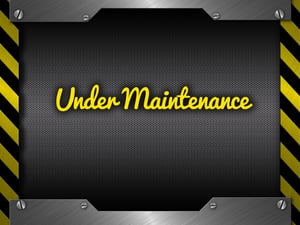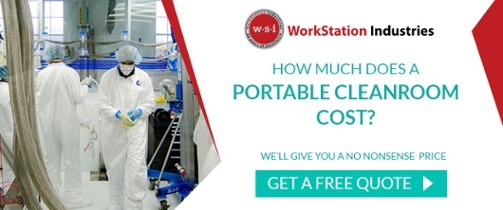If you’re researching clean rooms or already have one in your work space, it’s likely because a controlled environment is critical to the success of your application.
Clean rooms are used across several industries - from manufacturing to pharmaceutical, biotech and university labs - to keep a space contaminant free.
However, having a clean room and using it correctly are two different things. The right clean room procedures must be in place to maintain a stringent level of cleanliness.
Here are some examples of clean room procedures that should always be part of your operating procedures. For specific procedures concerning your clean room configuration, it is always best to consult your clean room’s manufacturer. They can ensure your setup is benefiting your production.
Re-evaluate Your Layout
If you are implementing a new modular clean room, it is important to consider workers and material flow. Your employees can be  the largest contamination source in a space. This will help you determine the best location for your clean room.
the largest contamination source in a space. This will help you determine the best location for your clean room.
If you already have a clean room in place, it is just as important to regularly reassess your layout. With any operation, your scope and workflow will evolve. As new people come on board, items in your lab may move or the layout of a space may change.
Whether you are evaluating a new space for a clean room, or re-evaluating your current clean room, here are some areas you should consider:
- Doors and pathways should be free of a critical process. These two areas of a space can disrupt air flow and increase the odds for contamination.
- Include a single access point. This will help prevent it from becoming a pathway.
- Take into account any contamination risks. These may include the tools you use, vacuums you use to clean and static electricity. Examine these risks and implement the proper resolutions to minimize contamination risks.
Remember: Your space may change often, so it’s important to evaluate any new pieces of equipment or change in cleaning procedures that occur in your clean room.
Know Your ISO Classification
While you should know your ISO classification before you install a clean room, your classification can change as well as your operation evolves. That is why it’s important to make reassessing your ISO classification part of your clean room procedures when you take on a new project or your needs as a laboratory change.
That’s because every industry and every application has a different set of cleanliness requirements. Clean room classifications address the level of cleanliness in the air according to particle size and concentration.
In the United States and Canada, the primary authority is the International Standards Organization (ISO) classification system, ISO 14644-1. ISO 1 rooms are considered the cleanest, whereas ISO 9 are the least clean (though still much cleaner than a regular space).
If you are not sure which ISO class your lab should follow, or if your needs change, it’s critical to consult with your clean room manufacturer to ensure your cleanliness standards remain intact.
Maintain Regular Cleanings
This involves much more than a spray bottle of cleaner and rag. Clean rooms require special housekeeping procedures,  schedules and materials to keep surfaces contaminate free.
schedules and materials to keep surfaces contaminate free.
That’s because certain floor finishes, chemicals, vacuums, mops and sponges can actually be a source of contamination. Keeping up to date on your clean room classification will help professionals determine which cleaning chemicals are appropriate for your space.
Special clean room-friendly solvents, brooms and materials are available that prevent contaminants from being released into the air.
Take Regular Air Samples
Air samplers help ensure a clean room environment is meet specifications. Typically, either air samplers or settle plates are used to gauge whether any contamination is occurring.
Air samplers draw in air, usually a specific volume. That air passes over a media plate, which tells whether there are any viable organisms in the air, and if so, their particle sizes and quantity per cubic feet.
Settle plates look like Petri dishes and contain sterile growth media. These plates can be left out in the open for up to four hours, though employees must be careful not to move or bump them.
Perform Routine Maintenance On Equipment
Ensuring that your equipment is operating as it should is important, since faulty equipment can impact the cleanliness of  a space.
a space.
In many clean rooms, a fume hood is used to keep technicians safe from toxic vapors and chemicals. Ensuring that your technicians know how to properly use your laboratory fume hood effectively and that it receives routine maintenance is critical - not only for your space’s cleanliness requirements, but for your workers’ safety as well.
You will also want to get your HVAC control system checked on a regular basis by a professional who is experienced in clean room systems. This technician will test for pressure, temperature and humidity requirements that are specific to your workspace.
Keep Employees Up To Date On Procedures
One of the best things you can do as a company is to update your procedures to account for any changes your lab has undergone. However, one of the worst things you can do is not keep your employees up to date on these changes.
Continuing education opportunities and required acknowledgement of policy changes by your staff are critical to keeping a space both safe and clean.
In addition to new clean room procedures, items you will want to ensure your staff follows include:
- Strict dress codes, since cleanroom gowning procedures that include donning gloves should be in place and protective clothing and gear like facemasks, coverall sleeves and special boots used
- Procedures when a spill occurs to minimize contamination
- Decontamination procedures when entering the clean room, such as cleaning with scrubbers or passing through showers
- Proper usage of equipment, such as fume hoods
Bottom Line
Clean rooms play a critical role in ensuring the cleanliness of a space and the integrity of your work. Having the right clean room procedures in place dictate the success of a clean room.
You can read more about the role of design and cleanings and proper training in our article, How To Maintain A Clean Room Environment.


